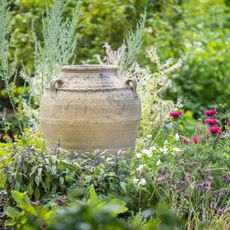How To Grow And Care For Persian Lily


Quick Persian Lily Facts
- Botanical name - Fritillaria persica
- Height - 1 to 3 feet (0.3 to 0.9 meters)
- Spread - 1 to 3 feet (0.3 to 0.9 meters)
- Sun exposure - Full sun to partial shade
- Soil requirements - Well-drained, fertile
- Hardiness zones - 5 to 8
- When to plant - Fall
Fritillaria persica, Persian lily or Persian fritillary, is a member of the lily family and is native to Western Asia. It is a striking addition to sunny borders and naturalized areas of gardens. The racemes of bell-shaped purple-brown Persian lily flowers cluster on spikes up to three feet (0.9 m) tall.
Fritillaria Persica Care
Persian lilies have truly unique and special flowers that make a great addition to any garden. They grow from bulbs planted in fall and bloom in spring.
Light
Persian lily does best in full sun, especially in the northern part of its hardiness range. In hotter climates, it benefits from a little afternoon shade. It will tolerate partial shade.
Water
Water needs are low for Persian lilies, which naturally grow in hot, dry climates. These flowers tolerate drought but do best with consistent moisture in the soil.
Temperature & Humidity
The Persian lily grows well in USDA zones 5 through 8 in North America. Plant the bulbs in fall and add a layer of mulch to keep them warm over winter. They do not require much humidity and do better in drier conditions.
Soil
Persian lilies grow best in rich fertile soil that drains very well. It will not tolerate soggy soil. Add some sand or pea gravel when planting bulbs to improve drainage.
Fertilizer
Plant Persian lily bulbs in rich, fertile soil. If the soil is poor, add some organic matter, like compost, before planting. They will also benefit from the application of a balanced fertilizer in early spring.
Gardening tips, videos, info and more delivered right to your inbox!
Sign up for the Gardening Know How newsletter today and receive a free download of our most popular eBook "How to Grow Delicious Tomatoes."
Problems, Pests & Diseases
The most significant issue with growing Persian lily is bulb rot. Make sure the soil drains very well and avoid overwatering. The strong aroma of the bulbs keeps away rodents and other animals that feed on bulbs. Slugs and snails might eat the foliage. Scarlet lily beetles can also be an issue. The best way to manage them is to remove them by hand.
How to Plant Fritillaria Persica Bulbs
Plant bulbs in fall to a depth of about six inches (15 cm). Space each bulb 9 to 12 inches (23 to 30 cm) apart. They will naturalize over several seasons and fill in the remaining space.
Pruning
The only pruning Persian lily needs is to remove faded and spent blooms and foliage. Deadhead the flowers as they fade. Remove foliage that becomes yellow or brown.
Propagation
The easiest way to propagate Persian lily is by division. Mature plants produce offsets, including small bulblets. Pull up plants in late summer or early fall to remove these bulblets. You can plant them to propagate. You can also collect seeds from the flowers to save and grow later. Seeds need to be cold for a period of time before they will germinate.
Fritillaria Persica Varieties
Several varieties of Persian lily are available with different heights and flower colors.
Green Dreams
This variety is at the tall end of the range for Persian lily, growing up to three feet (0.90 m). The flowers are pale purple with a green tint.
Ivory Bells
Ivory Bells is also tall. The flowers are green-white, changing to white as they mature.
Purple Dynamite
A shorter variety, Purple Dynamite blooms deep burgundy, darkening almost to black.
Adiyaman
This variety produces deep, plum-colored flowers with less brown than other varieties.
Frequently Asked Questions
Do Fritillaria Persica Bulbs Multiply?
Yes, Persian lily bulbs produce smaller bulblets. You can remove these offshoots to propagate them.
Does Fritillaria Persica Like Sun or Shade?
Persian lily does best in full sun but can benefit from some shade, especially when afternoons are hot.

Mary Ellen Ellis has been gardening for over 20 years. With degrees in Chemistry and Biology, Mary Ellen's specialties are flowers, native plants, and herbs.
-
 Front Yard Herb Garden Ideas To Spice Up Your Landscape
Front Yard Herb Garden Ideas To Spice Up Your LandscapeUse your imagination and plant a lovely front yard herb garden. You’ll love the convenience, the fragrance and the beauty, and pollinators will appreciate it.
By Amy Grant
-
 When To Clean Up Garden Beds In Spring To Protect Pollinators
When To Clean Up Garden Beds In Spring To Protect PollinatorsEvery spring, I'm reminded that many species of insects have used my garden as a winter hotel and may not be ready for a wake-up call just yet.
By Teo Spengler